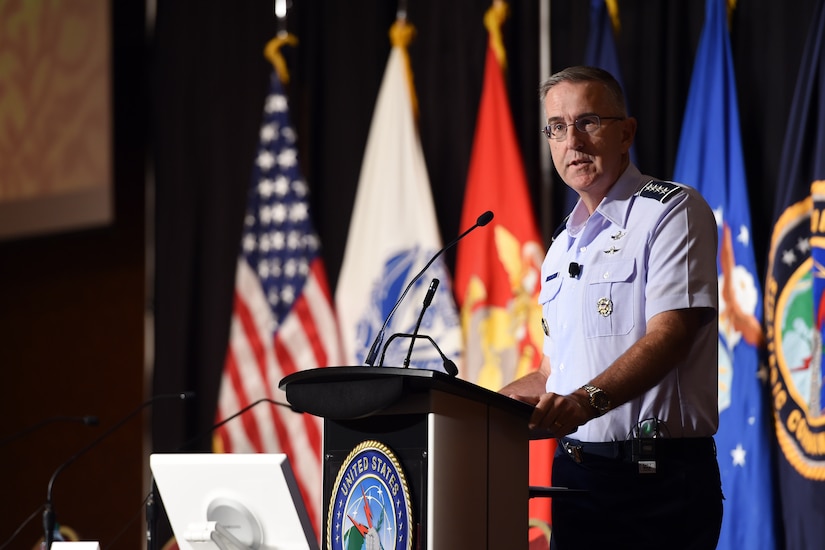By Lisa Ferdinando, DoD News, Defense Media Activity
WASHINGTON -- The men and women of U.S. Strategic Command
are ready to respond to any threat, Stratcom’s commander said yesterday in La
Vista, Nebraska.
Speaking to reporters during a deterrence symposium, Air
Force Gen. John E. Hyten noted positive
developments regarding North Korea, including the United States and South Korea
engaging in talks with that country.
There is the potential for denuclearization, he added. “I
can tell you from a Stratcom perspective, any time statements are coming out
[and] politicians are talking, I’m much happier,” Hyten said. “Nonetheless, our
responsibility is to always be ready -- and so we will always be ready.”
The force is fully ready and fully postured to deal with any
threat that comes out of North Korea, the general said. “The missile defense
capabilities in Alaska are fully prepared, California [is] fully prepared, and
our deterrent force is on alert, fully prepared right now,” he stressed.
Nuclear Capabilities Not Only Priority
Hyten opened the two-day Stratcom conference yesterday by
explaining that deterrence encompasses more than just nuclear capabilities. The
purpose of the conference, he said, is for the command to engage with others
about what deterrence means in the 21st century.
He outlined Stratcom’s three priorities: to provide a
strategic deterrent for the United States and its allies, provide a decisive
response if deterrence fails, and act with a combat-ready force.
“The nuclear capabilities provide the backstop. It is the
most important element of it,” he said. “It is the first priority, but it can’t
be the only priority.”
The United States has to look at nuclear, space, cyber,
conventional and all the pieces that come together, he said, and “work with our
allies to create the environment where peace can take hold in the world.”
Same Goal, Changing Security Environment
The goal of deterrence remains the same since the original
discussions on the topic in the 1960s, Hyten said. That objective, he noted, is
to impose costs on an adversary, deny benefit to that adversary and make sure that
the capabilities are communicated credibly so the adversary will not act.
But what has changed since the 1960s, he pointed out, is the
global security environment.
“Today we have not just one adversary, we have many
potential adversaries, and everything that we do in all parts of the world
impacts everybody else,” Hyten said.
Honoring Those Who Serve
The deterrence mission is possible because of the men and
women dedicated to safeguarding the nation, Hyten said.
“We have to have our most precious resource put out in front
to make sure we do that job,” he said. “That most precious resource is our sons
and daughters.”
Stratcom comprises 162,000 service members who are serving
around the globe, Hyten said. “They climb down into the holes of the missile
fields and they climb onto a submarine and they go on alert. They fly the
bombers. They go to work in the space business,” he added.
Deterrence is an active mission, Hyten said, and Stratcom’s
men and women are trained, resilient and equipped to do the job.
“Deterrence does not exist just because we have capability,”
he said. “It has to be capability that is practiced, that is ready, that our
adversaries know [is] ready, and we’re able to respond to any threat that comes
after the United States of America.”

No comments:
Post a Comment